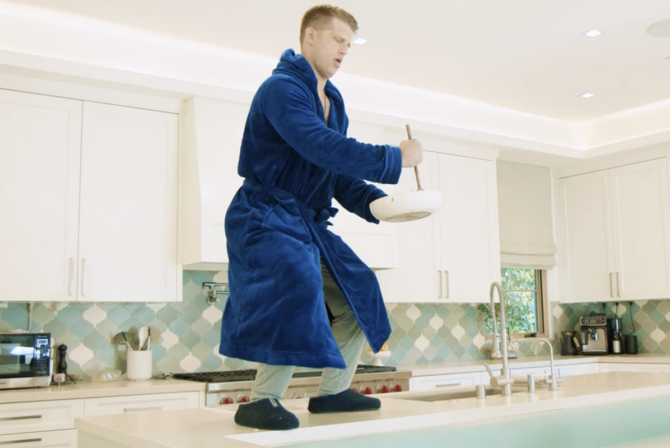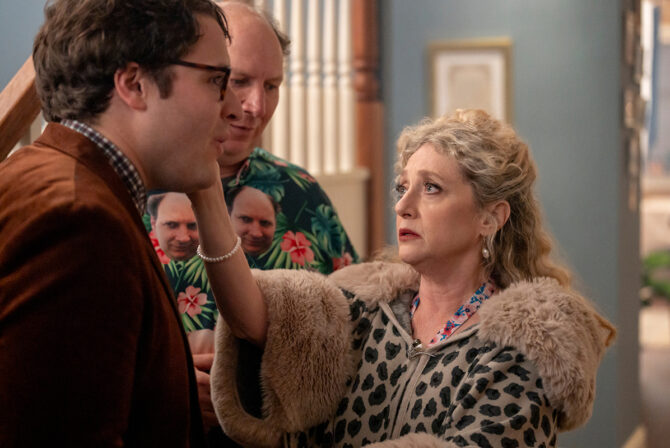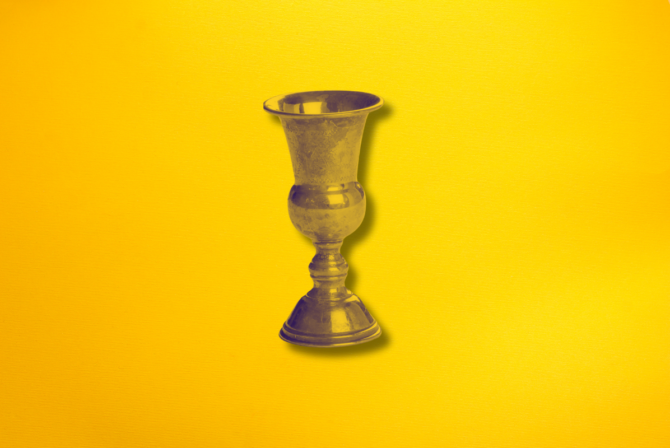“So, considering the two constituencies, what time do you think this event will REALLY start?” My smart-ass 15-year-old asked as he, my husband, our two younger kids, and I were walking to a dinner celebrating 25 years of the Upper West Side temple where my daughter goes to day school, and an African-American Harlem church, working together on a variety of civil rights issues.
When I didn’t reply one way or the other, he followed up with, “You know, Jewish Standard Time… Colored People Time…”
“We got it,” my husband interrupted. “We just obviously didn’t feel it was worth commenting on.”
READ: Will My Son Be the Only Black Jew in High School?
To be honest, my husband wasn’t too thrilled to be heading there, either. It was Friday night. He’s a middle school math and physics teacher. It had been a long week. He was exhausted. The only reason he was going was because I’d phrased it as a fact, not a question.
And the reason I’d done that was because I wanted to make it clear to the kids that their attendance wasn’t optional.
Here’s the deal: I’m Jewish. My husband is African-American. Our kids identify as both. Except, when it comes to community events, the scale tips much further into the Jewish column. We welcome Shabbat on Friday nights. We celebrate the Jewish holidays. (We’d recently hosted a seder led by my 2nd grader.) We read books sent to us by the nice people at PJ Library. We talk about how Israel is portrayed on the news and the Jewish subtext of movies.
We also talk about the history of African-Americans. We discuss current events, especially, recently, the epidemic levels of police shootings with no repercussions. But there is more to being Black than persecution. (The same thing goes for being Jewish. At the event, a handout listed all the things Blacks and Jews have in common, and the bulk of it was who was killed where, when, and in what numbers. Really? Is that it? How about beautiful brown eyes? Can we think of something even a little bit more positive?)
Unfortunately, when it comes to participating in the African-American community, I feel I–and by extension, we as a family–have been lacking. So much of the culture is church-based, and while my kids have been to a few gatherings at their paternal grandparents’ house of worship, it’s not a regular thing. We don’t celebrate Kwanzaa, because both my husband and I have philosophical issues with it. We try to buy what children’s books we can that feature African-American protagonists (“The Stories Julian Tells” series is awesome, by the way), and watch diverse movies and TV shows (though, for the record, both my husband and oldest son enjoyed the Asian-American immigrant comedy, “Fresh Off the Boat” more than “Black-ish”).
There are those who wonder why I’m the one in charge of my children’s African-American upbringing, instead of a more obvious person like, say, my husband. But he subscribes to the comedian Chris Rock’s philosophy that, “If Johnny can’t read, that’s Mama’s fault. If Johnny can’t read because the electric bill hasn’t been paid, that’s Daddy’s fault.”
Oh, and there’s one more thing: I care more about it than he does. I suspect it comes from my Jewish background and all that “Thou shalt teach them diligently unto thy children, and shalt talk of them when thou sittest in thine house, and when thou walkest by the way, and when thou liest down, and when thou risest up” stuff.
To my husband, your culture is just your culture. You don’t have to do anything special to pass it on; it’s perennially there, available for the absorbing by osmosis.
READ: My Daughter’s Black/Jewish Hair
Uh-uh. Not in my multicultural home, thank you very much. In my home, we work for everything.
So when the opportunity to attend this dinner came up, nobody got a choice in the matter; off we all went. And it was lovely. (Though, to give my oldest son credit, it did start 40 minutes past the listed time; stereotypes are stereotypes for a reason.) There were speeches from rabbis and preachers about how these two groups worked together to fight for voting rights, set up homeless shelters, and tend to AIDS patients. Martin Luther King’s “I Have a Dream” speech was read out loud, and we sang “Let My People Go” and “We Shall Overcome.” (As an added bonus, my daughter managed not to spill grape juice on the white, lace dress she’d insisted on wearing.)
READ: Where is the Jewish Version of ‘Glory?’
How much did my kids actually absorb? I don’t really know. But learning isn’t a one-shot deal. It’s a gradual process, layer upon layer of repetition until something finally sticks. Not unlike finishing reading the Torah… before starting it all over again.
And at the end of the evening, my husband said, “That was nice. Thank you for dragging me to something I thought I didn’t want to go to.”
Yup, layer by layer….







